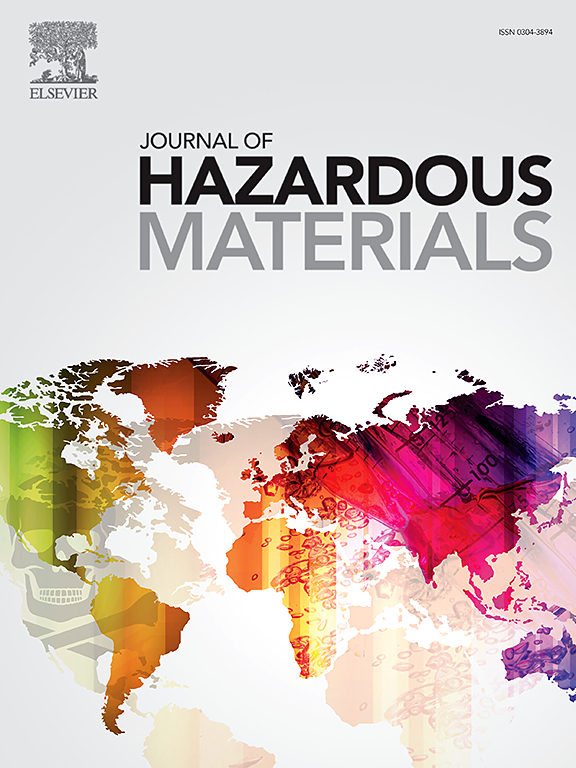Design of an Efficient Nitrate Reduction Electrocatalyst via Active Site Identification and Optimization in Fe3O4
IF 12.2
1区 环境科学与生态学
Q1 ENGINEERING, ENVIRONMENTAL
引用次数: 0
Abstract
Identifying the active sites of an electrocatalyst is crucial for understanding and improving the electrocatalytic performance of electrocatalyst. Fe3O4, as an efficient electrocatalyst for the electrocatalytic NO3- reduction reaction (eNO3-RR), has been extensively investigated while the genuine active site is unclear. In this study, we demonstrated that the eNO3-RR activity of Fe3O4 is not influenced by the geometric position of Fe ions but is highly dependent on the valence state of iron. Specifically, eNO3-RR is more likely to occur on Fe2+ sites compared to Fe3+ sites. The FeCo2O4 catalyst, synthesized by substituting inert Fe3+ with highly active Co3+, exhibits exceptional performance. At an electrode potential of -0.6 V vs. RHE, the Faradaic efficiency for ammonia production reached 98.90%, with an ammonia generation rate of 29.20 mg h-1 cm-2. Furthermore, when utilized as the cathode material in a Zn-NO3- battery, the peak power density reaches 4.7 mW cm-2. Our study not only elucidates the correlation between the valence state of Fe ions in Fe3O4 and the intrinsic activity of eNO3-RR, but also demonstrates that the FeCo2O4 catalyst synthesized via cation substitution exhibits superior performance. This finding offers a novel and effective strategy for the rational design of high-performance spinel electrocatalysts.Environmental implication
Nitrate pollution represents a significant environmental challenge confronting the global community. The traditional Haber-Bosch process, as the cornerstone technology for ammonia synthesis, has been instrumental in supporting modern agriculture and industrial development. However, its high energy consumption, substantial carbon emissions, and dependence on fossil fuels are at odds with the principles of sustainable development. Electro-catalytic nitrate reduction technology provides a novel solution to these challenges. This study identified the active sites of Fe3O4 and developed a FeCo2O4 nitrate reduction catalyst that exhibited exceptional performance in the nitrate reduction reaction. This catalyst not only holds considerable promise for mitigating nitrate pollution but also has the potential to advance the development of green ammonia synthesis and sustainable nitrogen cycling, thereby exerting profound impacts on environmental protection and energy sustainability.

求助全文
约1分钟内获得全文
求助全文
来源期刊

Journal of Hazardous Materials
工程技术-工程:环境
CiteScore
25.40
自引率
5.90%
发文量
3059
审稿时长
58 days
期刊介绍:
The Journal of Hazardous Materials serves as a global platform for promoting cutting-edge research in the field of Environmental Science and Engineering. Our publication features a wide range of articles, including full-length research papers, review articles, and perspectives, with the aim of enhancing our understanding of the dangers and risks associated with various materials concerning public health and the environment. It is important to note that the term "environmental contaminants" refers specifically to substances that pose hazardous effects through contamination, while excluding those that do not have such impacts on the environment or human health. Moreover, we emphasize the distinction between wastes and hazardous materials in order to provide further clarity on the scope of the journal. We have a keen interest in exploring specific compounds and microbial agents that have adverse effects on the environment.
 求助内容:
求助内容: 应助结果提醒方式:
应助结果提醒方式:


